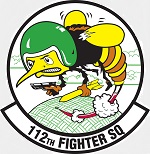Hobby Master HA38035 USAF General Dynamics F-16C Viper Fighter - 89-2098, 112th Fighter Squadron "Stingers", Ohio ANG, Toledo Air National Guard Base, Toledo, Ohio, August 2023 [Low-Vis Scheme] (1:72 Scale)
"Obsolete weapons do not deter."
- British Prime Minister Margaret Thatcher
 Even at the ripe old age of 20, the F-16 Falcon remains a fast and potent favorite among fighter pilots, and one of the best fighters in its class. Designed originally as a no-frills, single-engine "hot rod", the addition of improved radar and weaponry have made the Falcon a super, lightweight jet. Used mainly as a bomber, the Fighting Falcon can also turn-and-burn with unbridled fury when provoked. It is also one of the first operational fly-by-wire aircraft; its flight controls being electronically operated and computer controlled. A 20mm cannon, Maverick missiles, and laser-guided bombs make the F-16 a potent multi-role fighter. However, it's light weight, speed and agility make it the choice of the US Air Force's Thunderbirds aerobatic team.
Even at the ripe old age of 20, the F-16 Falcon remains a fast and potent favorite among fighter pilots, and one of the best fighters in its class. Designed originally as a no-frills, single-engine "hot rod", the addition of improved radar and weaponry have made the Falcon a super, lightweight jet. Used mainly as a bomber, the Fighting Falcon can also turn-and-burn with unbridled fury when provoked. It is also one of the first operational fly-by-wire aircraft; its flight controls being electronically operated and computer controlled. A 20mm cannon, Maverick missiles, and laser-guided bombs make the F-16 a potent multi-role fighter. However, it's light weight, speed and agility make it the choice of the US Air Force's Thunderbirds aerobatic team.
The F-16C (single seat) and F-16D (two seat) variants entered production in 1984. The first C/D version was the Block 25 with improved cockpit avionics and radar which added all-weather capability with beyond-visual-range (BVR) AIM-7 and AIM-120 air-air missiles. Block 30/32, 40/42, and 50/52 were later C/D versions. The F-16C/D had a unit cost of US$18.8 million (1998). Operational cost per flight hour has been estimated at $7,000 to $22,470 or $24,000, depending on calculation method.
Pictured here is a gorgeous 1:72 scale diecast replica of a F-16C Viper fighter that was attached to the 112th Fighter Squadron "Stingers", Ohio ANG, then deployed to Toledo Air National Guard Base, Toledo, Ohio, during August 2023.
Sold Out!
Dimensions:
Wingspan: 7-inches
Length: 8-inches
Release Date: November 2024
 Historical Account: "Stingers" - In mid-1996, the Air Force, in response to budget cuts, and changing world situations, began experimenting with Air Expeditionary organizations. The Air Expeditionary Force (AEF) concept was developed that would mix Active-Duty, Reserve and Air National Guard elements into a combined force. Instead of entire permanent units deploying as "Provisional" as in the 1991 Gulf War, Expeditionary units are composed of "aviation packages" from several wings, including active-duty Air Force, the Air Force Reserve Command and the Air National Guard, would be married together to carry out the assigned deployment rotation.
Historical Account: "Stingers" - In mid-1996, the Air Force, in response to budget cuts, and changing world situations, began experimenting with Air Expeditionary organizations. The Air Expeditionary Force (AEF) concept was developed that would mix Active-Duty, Reserve and Air National Guard elements into a combined force. Instead of entire permanent units deploying as "Provisional" as in the 1991 Gulf War, Expeditionary units are composed of "aviation packages" from several wings, including active-duty Air Force, the Air Force Reserve Command and the Air National Guard, would be married together to carry out the assigned deployment rotation.
In October 1996, the 112th Expeditionary Fighter Squadron (112 EFS) was first formed from 162d FW personnel and eight aircraft and deployed to Incirlik Air Base, Turkey. The 112th EFS joined with the 124th EFS (Iowa ANG) and the 125th EFS (Oklahoma ANG) as part of a "rainbow" deployment to support Operation Provide Comfort. In January 1997, this changed to Operation Northern Watch just prior to the unit's return to Toledo to enforce the No-Fly-Zones over Iraq. More Operation Northern Watch deployments were made to Incirlik AB by the 112th EFS in 1998, 1999, 2000 and 2002 respectively. The 112th EFS deployed to Al Jaber Air Base, Kuwait, for Operation Southern Watch in 2001.
After the events of September 11th, 2001, unit members have volunteered to support both Operation Iraqi Freedom and Operation Enduring Freedom in 2005 and again for Operation Iraqi Freedom again in 2007.


